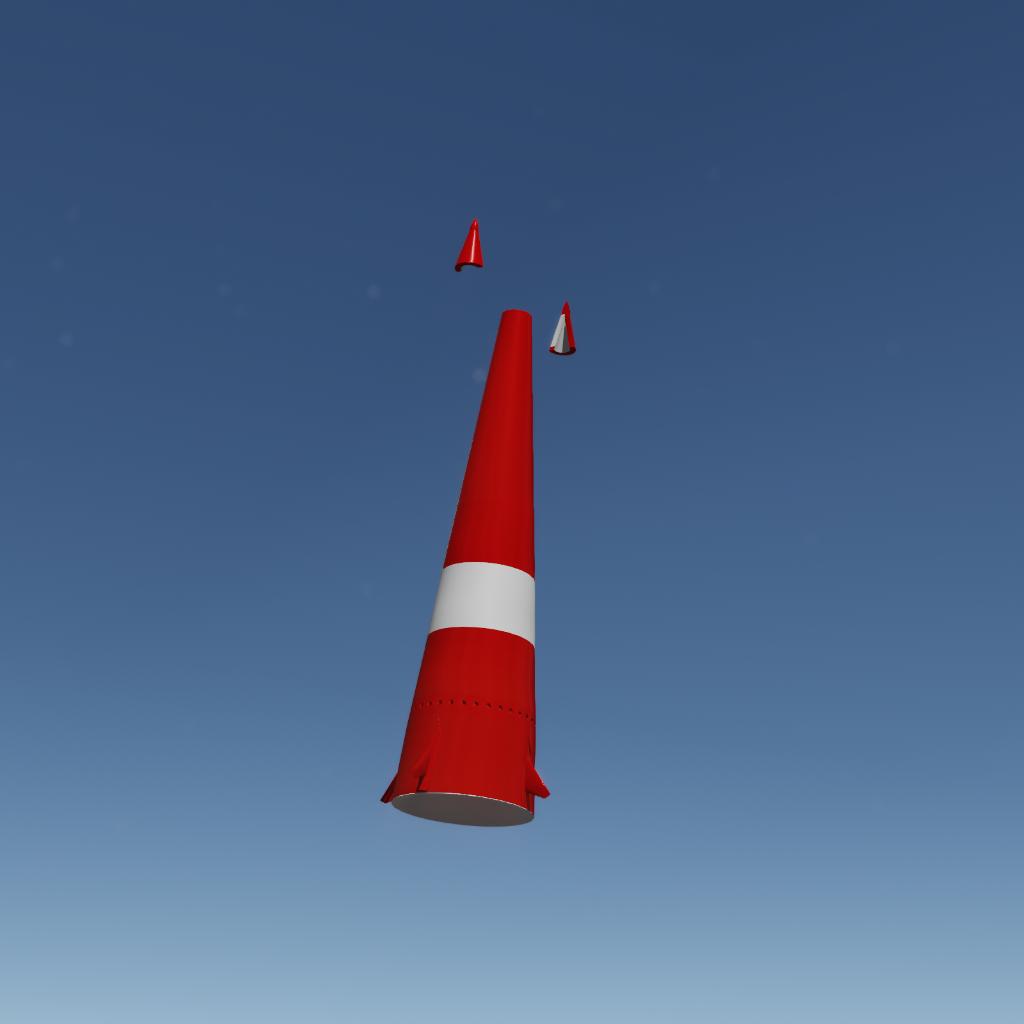Found this out back by the water tower. It looks like it still works. The manual is worn and waterlogged, but here's what I could read....
=-= Instructions
WARNING! Any fairing use will result in termination of any warranty for this product. User is responsible for all cleanup and waste disposal fees.
AG 1: Fins/control surfaces (default on)
AG 9: Attitude/inclination control (default on)
AG 10: Retract stand legs and activate RCS (default off)
Slider 1: Attitude
Slider 2: Inclination
Typical SR2 flight sequence {
Raise stand legs
Adjust attitude & inclination
Deactivate attitude/inclination and zero sliders (optional)
Throttle to full power
Lock navigation sphere
Fire first stage for liftoff
=--= Summary
American anti-ballistic missile. Hibex was a 5.2 m long test vehicle used by the Army in a series of research experiments investigating high performance missile boosters. During mid-1960's experimental flights at White Sands, Hibex was fired successfully from underground cells and above-ground launch sites.
HIBEX had a short conical body and was powered by a solid-propellant rocket motor. Its design goal was the capability to intercept ICBM reentry vehicles at altitudes of less than 6100 m (20000 ft), where the RV would travel at about 3 km/s (10000 fps). The initial acceleration of HIBEX was almost 400 g. At least seven HIBEX rockets were fired at White Sands Missile Range (WSMR) between February 1965 and January 1966, and the test results were used in the development of the operational Sprint missile.
=---= History
In 1968, DARPA began the UPSTAGE (Upper Stage Acceleration and Guidance Experiment) program, which flight-tested a highly manoeuverable second stage for HIBEX boosters. Between November 1971 and August 1972, five UPSTAGE tests were conducted at the WSMR. The flights evaluated stage separation, guidance & control systems, and structural and aerodynamic properties. Then new laser gyros were used in the guidance and control section, because conventional mechanical ones were too slow for the required reaction time and acceleration. The UPSTAGE stage was a solid-propellant rocket, which weighed about 140 kg (300 lb), and used “finlet” injections for transverse thrust. It was command-guided from the ground, and achieved lateral accelerations of up to 300 g and command response times in the order of milliseconds. This performance would have been necessary to intercept MaRVs (Manoeuvering Reentry Vehicles).
Example Launch Data
Status: Retired 1966.
First Launch: 1965-02-25.
Last Launch: 1966-01-13.
Number: 7 .
Gross mass: 6,000 kg (13,200 lb).
Height: 5.20 m (17.00 ft). Diameter: 1.22 m (4.00 ft). Apogee: 20 km (12 mi).
The HIBEX program was part of the Advanced Research Projects Agency's Project Defender, a study of ballistic missile defense systems. HIBEX was designed for low level intercept of entry vehicles below 3 km altitude within 2 seconds of launch. Hibex' neutron-generating warhead would disable the fissile core of the incoming enemy re-entry vehicle. It would also kill all living things within a 5 km radius of detonation. This concept was further developed into the production Sprint missile for close-in anti-ballistic missile defense. Launch data is: incomplete.
=----= Specifications
Specific length, width, weight, apogee, and other measures may vary as prototyping never completed.
Length
4.90 m (16 ft)
Diameter
1.10 m (3.6 ft)
Weight
1180 kg (2600 lb)
Speed
2560 m/s (8400 fps)
Propulsion
Solid-fueled rocket; 2180 kN (490000 lb) for 1.1 s
=-----= References
Much of above text was taken from:
http://www.designation-systems.net/dusrm/app4/hibex.html










lol ya! Trying to go for a bit of history. Hopefully I got everything right. It was really fun to work on since it required extreme acceleration off the ground.
Slowly I'm getting better at engineering in the game. The picture with the stand there is old. The new stand is nicer. Happy Sunday! :) Procedural rockets time.